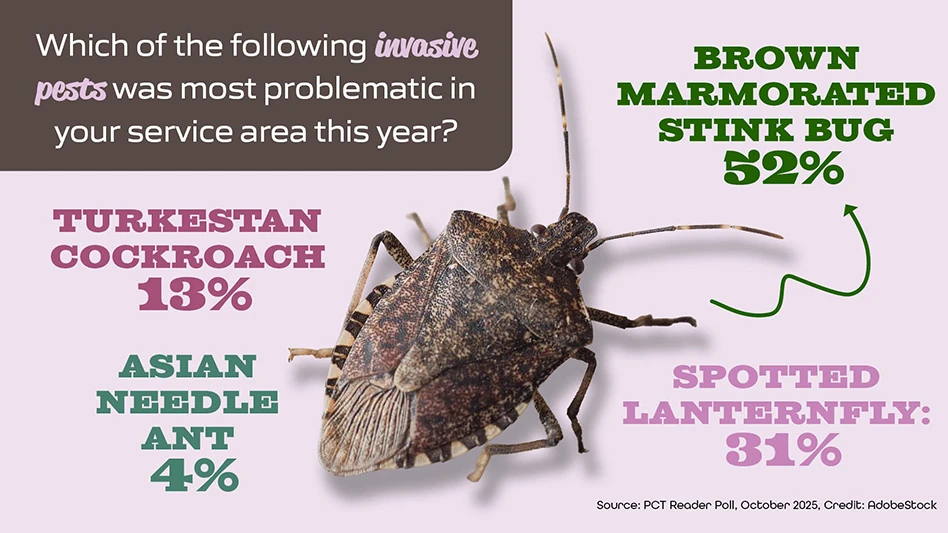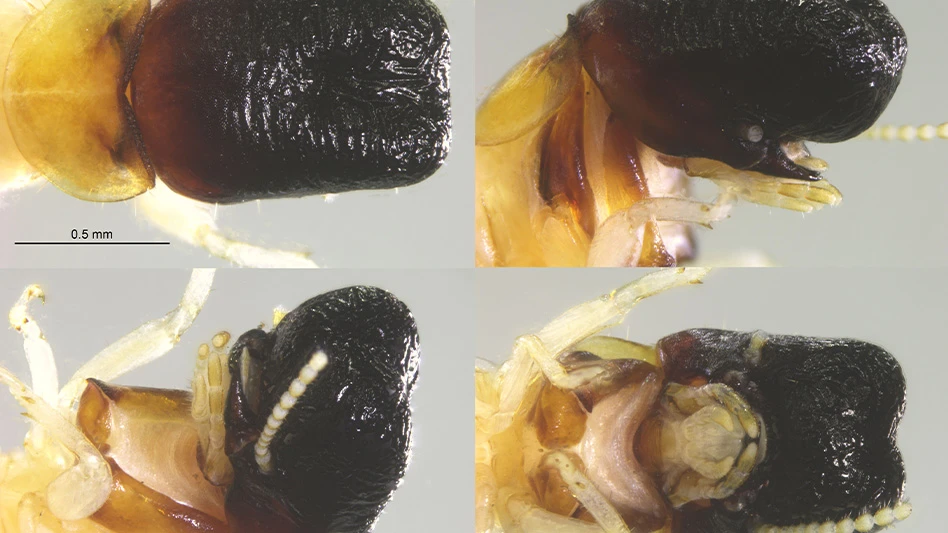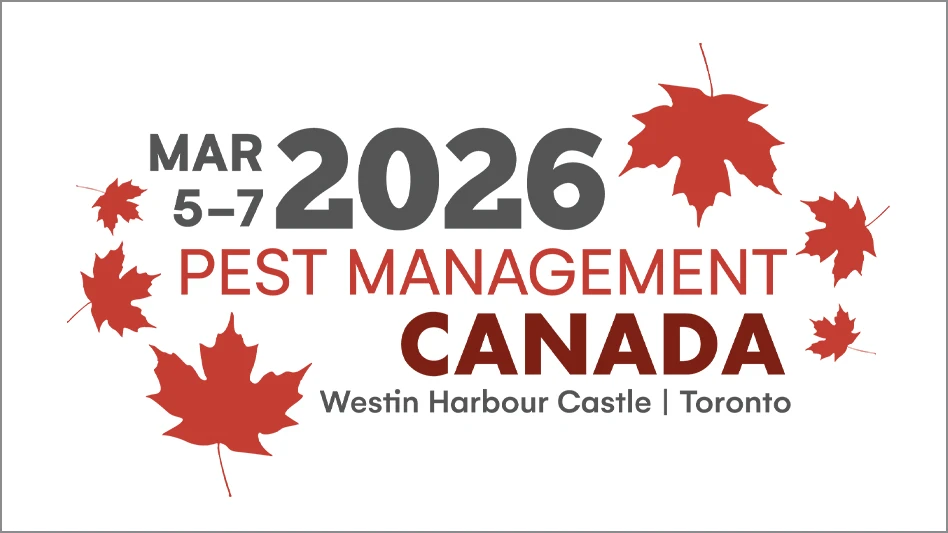 As PMPs continue to deal with bed bugs, one question that has arisen is how an operator should treat belongings that cannot be conventionally sprayed, including clothes, electronics, books, purses, etc. All stages of C. lectularius (adults, nymphs and eggs) can easily be transported via luggage, clothing, furniture, as well as other items (Potter 2008). This is a major problem, especially for hotels, motels and apartments, where occupancy turnover is high (Potter 2008). Thus, alternative treatments must be created to combat the high rate of C. lectularius infestations due to travelers or occupants moving. Treatment of luggage after airport transportation, hotel occupancy and/or occupancy of housing could prove successful in reducing new infestations in residences. Treatment of luggage, electronics, purses, shoes and papers conducted in a short period of time would benefit both the hotel and pest control industries.
As PMPs continue to deal with bed bugs, one question that has arisen is how an operator should treat belongings that cannot be conventionally sprayed, including clothes, electronics, books, purses, etc. All stages of C. lectularius (adults, nymphs and eggs) can easily be transported via luggage, clothing, furniture, as well as other items (Potter 2008). This is a major problem, especially for hotels, motels and apartments, where occupancy turnover is high (Potter 2008). Thus, alternative treatments must be created to combat the high rate of C. lectularius infestations due to travelers or occupants moving. Treatment of luggage after airport transportation, hotel occupancy and/or occupancy of housing could prove successful in reducing new infestations in residences. Treatment of luggage, electronics, purses, shoes and papers conducted in a short period of time would benefit both the hotel and pest control industries.
Currently PMPs can use sulfuryl fluoride and heat as fumigants. However, in certain circumstances, CO2 can be a viable option as a fumigant for a PMP. Wang et al (2012) documented that CO2 is 100 percent effective against all stages of C. lectularius (adults, nymphs and eggs) in heavy-duty garbage bags at a concentration of 8 hours at 100 percent. Hermann et al. (1999) reported in a proceeding abstract that 100 percent mortality of all stages of C. lectularius was achieved within 6-hour period with 100 percent CO2.
We wanted to test a practical method of performing a fumigation of CO2 for pest control operators. Therefore, we installed a fumigation chamber to monitor the results of CO2 fumigations. CO2 was the chosen fumigant because it is an organic substance and requires no aeration time. CO2 is relatively easy to obtain, inexpensive and does not require licensing is most states. Therefore, CO2 is a viable option for the test in terms of a more environmentally safe, quicker and cheaper process that would be beneficial for the pest control operator and the consumer. (Editor’s note: CO2 as a bed bug “fumigant” is not an approved use by EPA. PMPs must follow all laws and regulations.)
 Chamber.
Chamber.
The fumigation chamber used was an International Organization of Standardization (ISO) 10-foot cargo-shipping container (see Figure 1 above). Inside the chamber an electrical outlet was installed to provide power for a heater if deemed necessary. An adjustable 1½-inch outlet valve also was installed on the top left corner of the chamber to release outgoing oxygen during fumigation. There were also two holes on the left wall. These two sealed holes provided the inlet and outlet for the injection/monitoring lines.
One line placed midway up the wall served as the monitoring line. The other near the floor served as the injection line. The injection line was then connected and modified into two release valves inside the chamber. The four walls and ceiling of the chamber were sprayed with insulation foam in attempt to achieve an airtight seal and controlled temperature. After all modifications the chamber was about 326 cubic feet. A flat roof and sprinkler system (similar to a mosquito misting system) were installed on top of the chamber to attempt to reduce high temperatures (see Figure 3).
 A 50-pound cylinder of CO2 (Ice House Co., Kenner, La.) was released into a single shooting line, which then flowed to the inside of the chamber where the two releasing valves were in place. A Pelouze Rubbermaid scale Model 4040G-88 was used to measure the flow rate of the CO2. Two 0.12-inch rubber hoses were connected to the two releasing valves inside the chamber to ensure a precise release of the fumigant. The two hoses were clamped with fumigation clamps facing downward to release CO2 into two buckets filled with rocks in order to decrease the turbulence inside the chamber (see Figure 2). About 48.5 pounds of CO2 were released into the chamber during each fumigation (2.2 pounds of CO2 is equal to 19.23 cubic feet).
A 50-pound cylinder of CO2 (Ice House Co., Kenner, La.) was released into a single shooting line, which then flowed to the inside of the chamber where the two releasing valves were in place. A Pelouze Rubbermaid scale Model 4040G-88 was used to measure the flow rate of the CO2. Two 0.12-inch rubber hoses were connected to the two releasing valves inside the chamber to ensure a precise release of the fumigant. The two hoses were clamped with fumigation clamps facing downward to release CO2 into two buckets filled with rocks in order to decrease the turbulence inside the chamber (see Figure 2). About 48.5 pounds of CO2 were released into the chamber during each fumigation (2.2 pounds of CO2 is equal to 19.23 cubic feet).
A CO2 meter containing a battery-operated micro-pump, which draws gas from inside the chamber via the monitoring line (supplied by CO2meter.com, a subsidiary of Sundae Inc., Ormond Beach, Fla.), was used for monitoring purposes. A wireless indoor/outdoor sensory AcuRite thermometer was used to monitor temperature inside the chamber. Ideally, a PMP would attempt to shoot about 1 pound of CO2 a minute. This rate decreases the turbulence in the chamber, allowing the carbon dioxide to settle at the bottom and the oxygen to ventilate out the top exit hole. Furthermore, while injecting the CO2, the cylinder must also be placed in a 5-gallon bucket of water with running water to help prevent freezing.
 Testing.
Testing.
For testing, two bed bugs (one adult, one nymph) were placed in a plastic petri dish (100 × 10 mm) covered in nylon stockings and two eggs in another petri dish for each of two suitcases (21 by 14 by 8.5 inches, 1200 denier polyester). The two suitcases were placed inside the chamber; one closed and one left open. The closed suitcase was zipped shut and the open suitcase was left unzipped and exposed (see Figure 4). Two control suitcases that were identically prepared with an equal number of control samples were kept in a room at 78°F. The suitcases were filled to capacity with synthetic colored rags and two standard size 100 percent cotton towels. After loading, they weighed about 13 pounds.
RESULTS. Our results showed 100 percent mortality for all fumigations lasting 12 hours at 90+ percent CO2. Bed bug eggs were more susceptible to CO2 than nymphs and adults, achieving 100 percent mortality on all tests performed.
From a production standpoint, CO2 is the more efficient choice. Many pest control businesses open at 8:00 a.m. and close at 5:00 p.m. A PMP’s 12-hour fumigation could start around 4:00 p.m. (soon after check-in time at a hotel and when a client realizes their dilemma). At 8:00 a.m. the next morning the items could be removed from the chamber and the traveler would get his or her bags free of bed bugs.
We believe that the fumigation chamber designed in the present study also would be ideal to treat bed bug-infested items such as clothing removed from closets and electronics that cannot be conventionally treated with pesticides.

Note: For a copy of the references mentioned in this article, visit www.pctonline.com and click on “online extras.”
Joe Martin is an employee at Terminix Service Company in the greater New Orleans area. Dr. Gregg Henderson is an urban entomology professor at Louisiana State University.

Explore the December 2013 Issue
Check out more from this issue and find your next story to read.
Latest from Pest Control Technology
- PCT/BASF Announce 2025 Technicians of the Year
- PestCo Holdings Acquires Southwest Exterminating
- Donny Oswalt Shares What Makes Termites a 'Tricky' Pest
- Study Finds Fecal Tests Can Reveal Active Termite Infestations
- Peachtree Pest Control Partners with Local Nonprofits to Fight Food Insecurity
- Allergy Technologies, PHA Expand ATAHC Complete Program to Protect 8,500 Homes
- Housecall Pro Hosts '25 Winter Summit Featuring Mike Rowe
- Advanced Education





